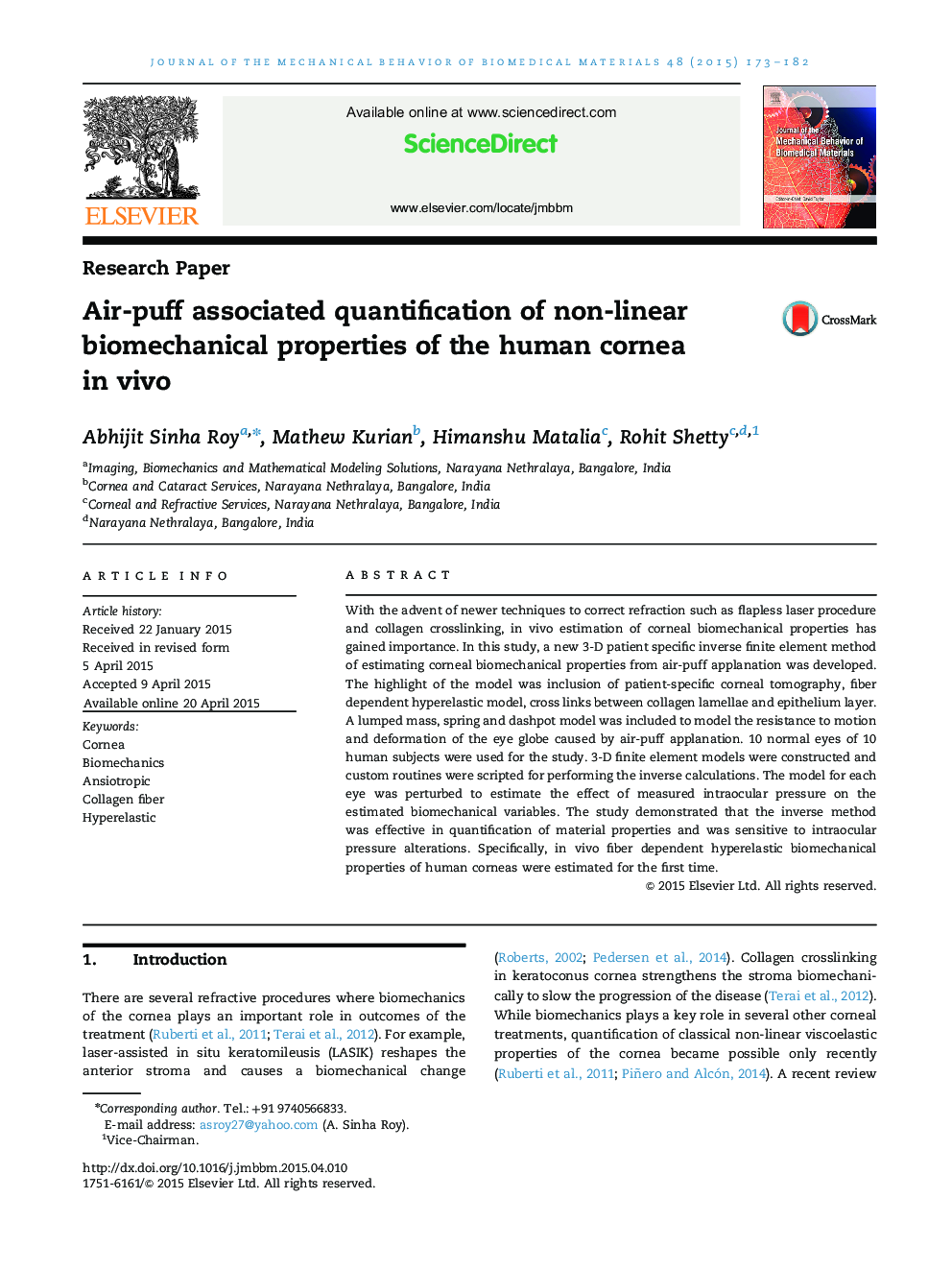| Article ID | Journal | Published Year | Pages | File Type |
|---|---|---|---|---|
| 7208474 | Journal of the Mechanical Behavior of Biomedical Materials | 2015 | 10 Pages |
Abstract
With the advent of newer techniques to correct refraction such as flapless laser procedure and collagen crosslinking, in vivo estimation of corneal biomechanical properties has gained importance. In this study, a new 3-D patient specific inverse finite element method of estimating corneal biomechanical properties from air-puff applanation was developed. The highlight of the model was inclusion of patient-specific corneal tomography, fiber dependent hyperelastic model, cross links between collagen lamellae and epithelium layer. A lumped mass, spring and dashpot model was included to model the resistance to motion and deformation of the eye globe caused by air-puff applanation. 10 normal eyes of 10 human subjects were used for the study. 3-D finite element models were constructed and custom routines were scripted for performing the inverse calculations. The model for each eye was perturbed to estimate the effect of measured intraocular pressure on the estimated biomechanical variables. The study demonstrated that the inverse method was effective in quantification of material properties and was sensitive to intraocular pressure alterations. Specifically, in vivo fiber dependent hyperelastic biomechanical properties of human corneas were estimated for the first time.
Related Topics
Physical Sciences and Engineering
Engineering
Biomedical Engineering
Authors
Abhijit Sinha Roy, Mathew Kurian, Himanshu Matalia, Rohit Shetty,
